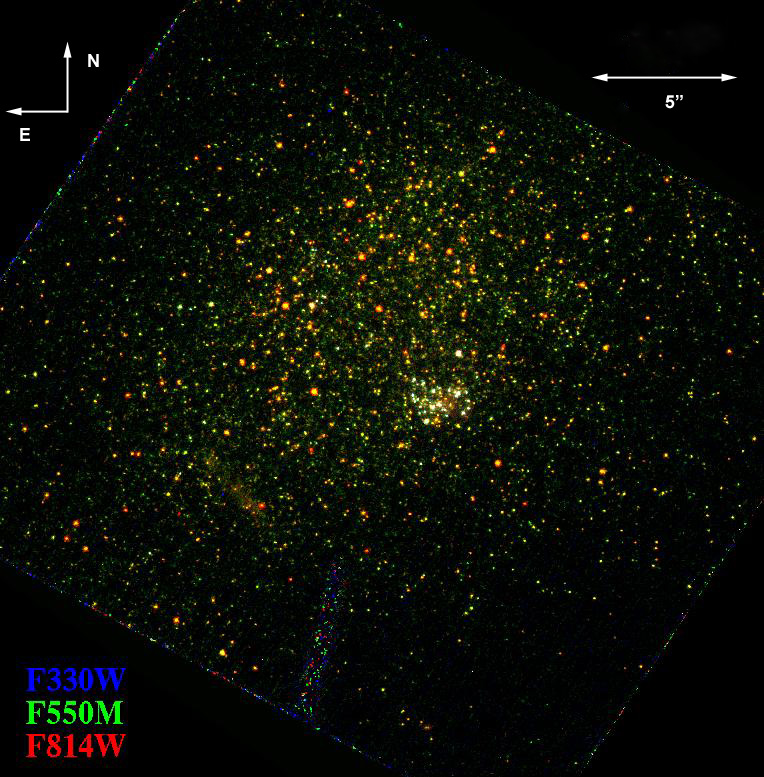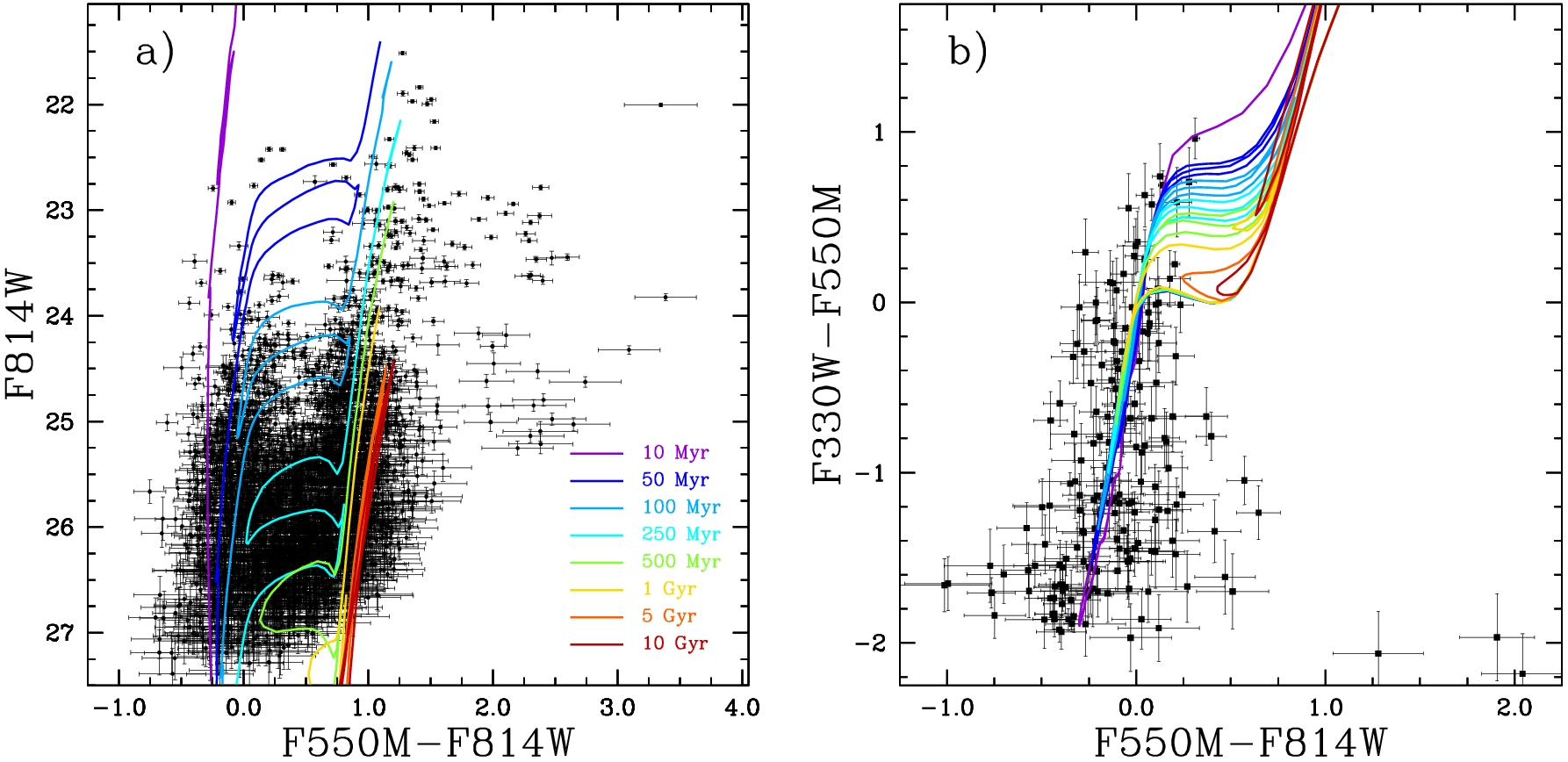

Hubble Space Telescope observations of the nearby (~16 million lightyear), extremely metal-poor (only 3% of the metallicity of our Sun), blue dwarf galaxy CGCG 269–049 reveal that this objects' apparent youth is only skin deep. Hubble's sharp view allowed measuring the brightness and color of several thousands individual stars. Analysis of the resulting color–magnitude diagram demonstrated that — whereas most of the light comes from a small number of very young, massive, luminous stars — most of the mass is locked up in faint stars that are at least a billion years and possibly even 10 billion years old. This fits better with current theories on galaxy formation and evolution in the Universe that hold that small galaxies should form early while large, massive galaxies assemble through the merging of many smaller ones.

